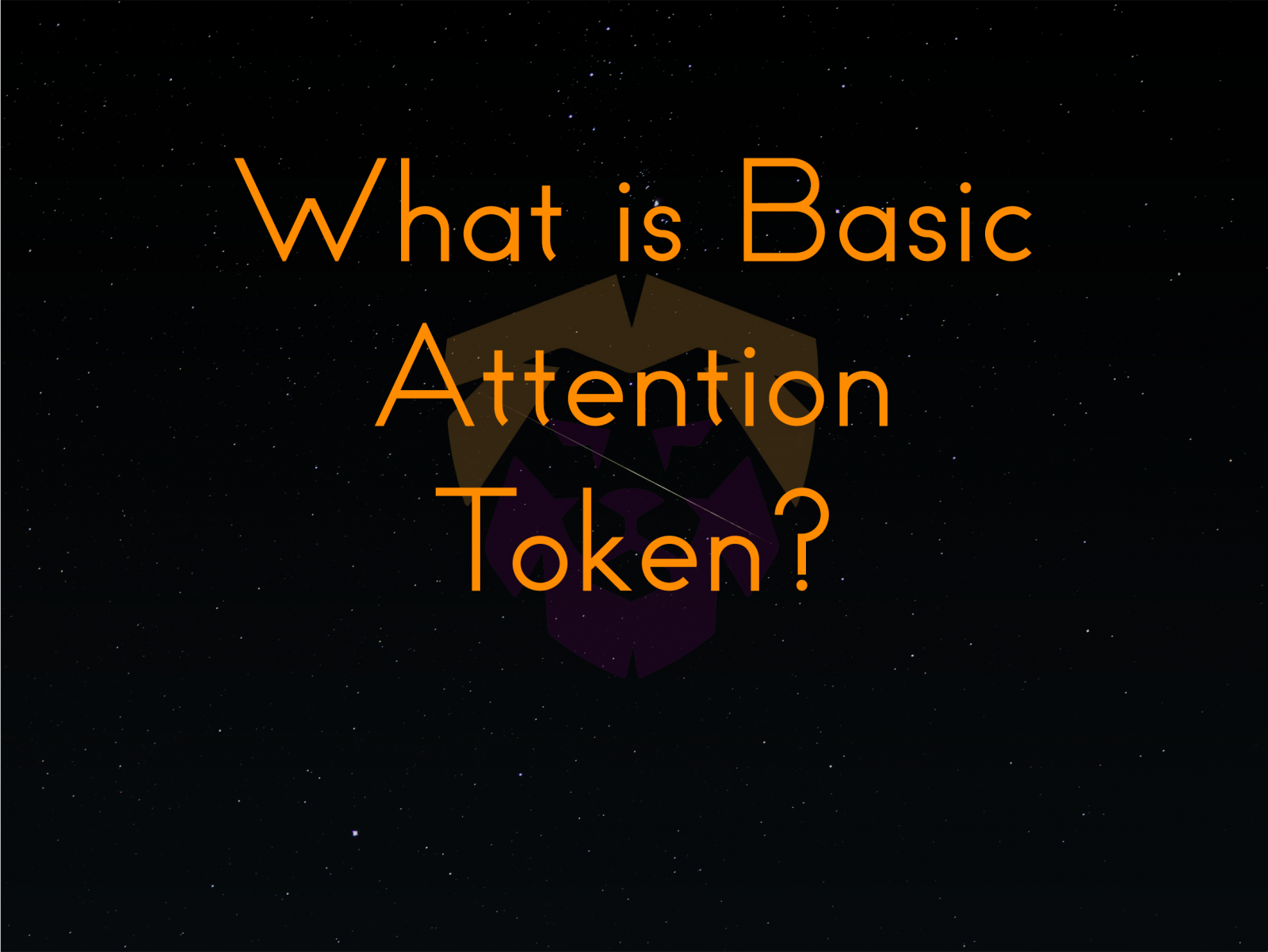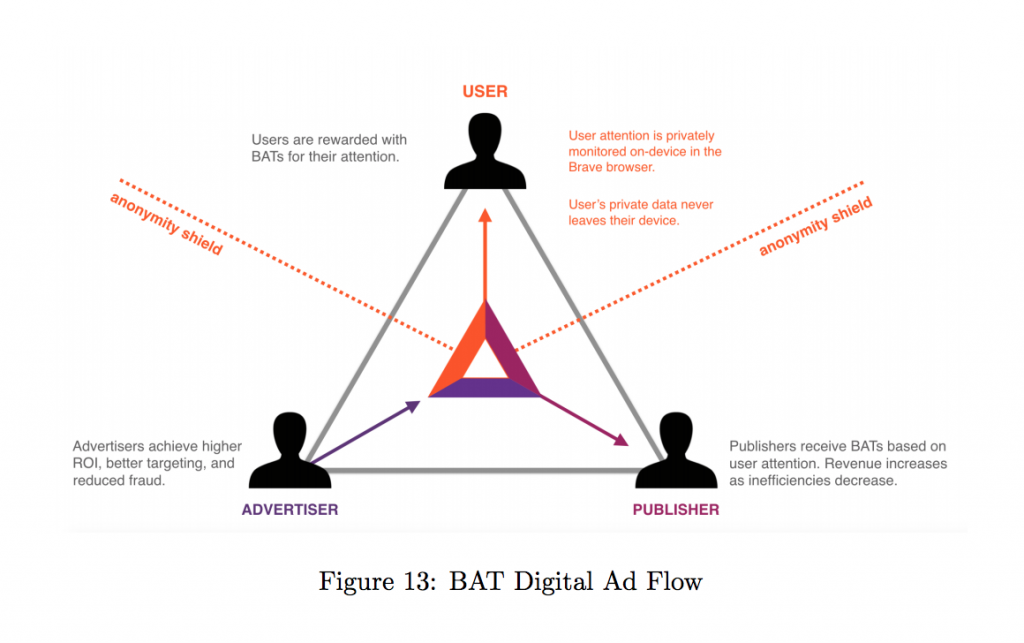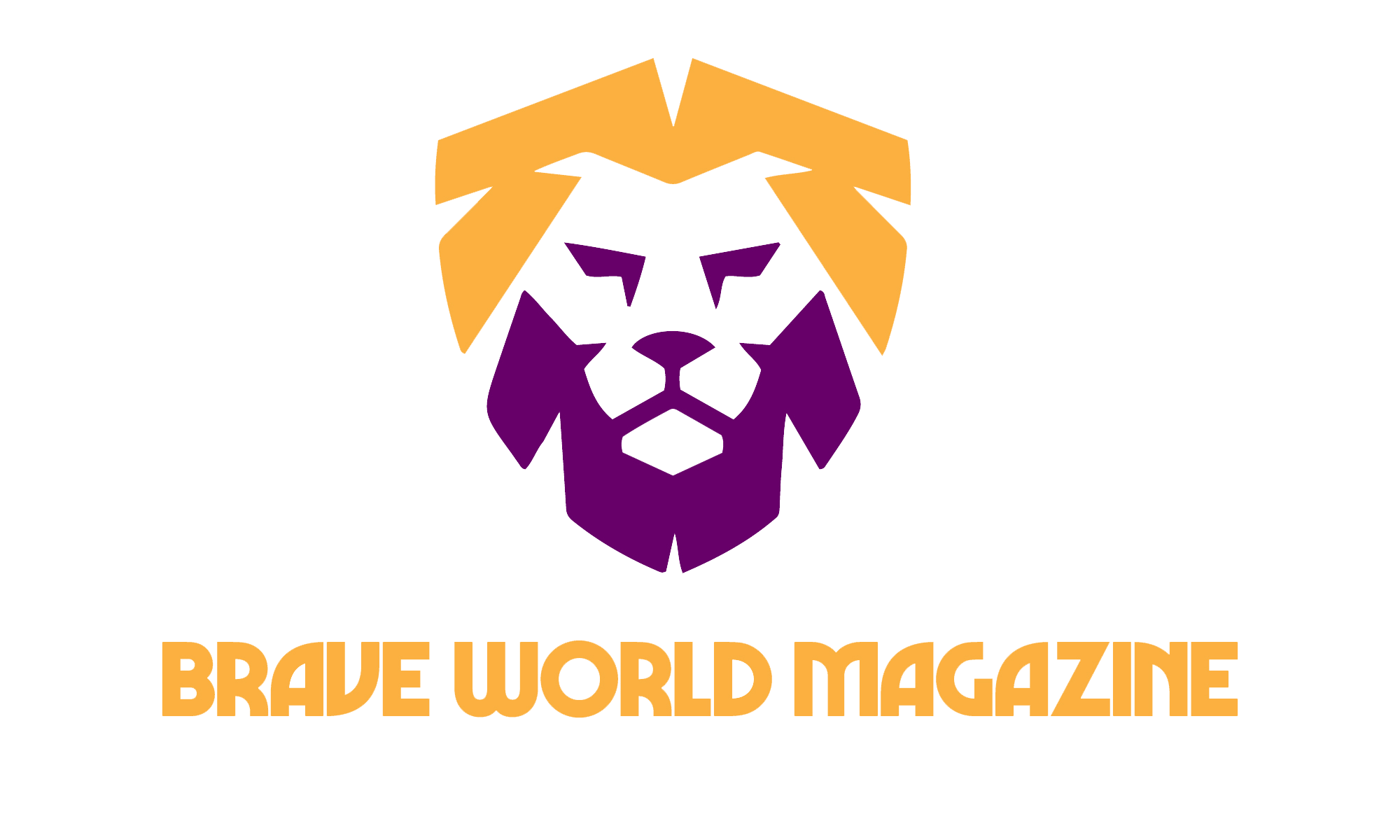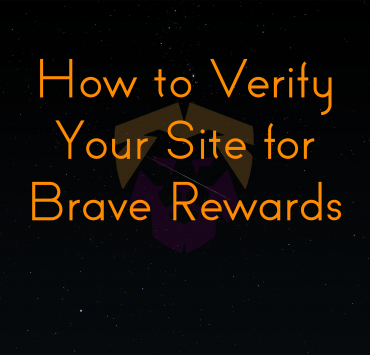What is Basic Attention Token?

As Brave describes it, Basic Attention Token (BAT) is “a blockchain-based digital advertising and rewards program.” The platform, founded by Brenden Eich (the creator of Javascript and co-founder of Mozilla and the Firefox browser), is to be integrated into what they call “BAT-enabled applications”, the most prominent being the Brave Browser. The BAT token itself is an Ethereum-based ERC20 utility token and is the primary account unit of the entire platform. The stated goal of the platform is to match ads to users’ interests without collecting data or tracking users AND pays users in BAT tokens for attention given to these ads.
The Current Dilemma
Basically, the Brendan and the team at Brave are trying to create a solution to the current problems with online advertising. As it stands today, the entire model, is a lose-lose-lose for the following 3 main users of the advertising industry:
- The User is being tracked through cookies and over websites constantly in their browsers (not so with the Brave browser, but we will expand on that later) as they consume content. The websites they visit are often bloated with obnoxious, loud, and many times virus-infested ads from ad networks that advertisers use to get eyes on their products. These ads can make Users’ devices and web browsing slower AND drain battery life in phones. The User hates the ads and the advertisers and does everything to not see ads, including installing ad blockers, which hurt revenue for Creators.
- The Advertiser, who need money to pay for hosting costs, often resort to using ad networks and paying for impressions, of which they may only see a 1-2% click-through rate (CTR) on average even with big companies like Google and Facebook. This means that they might pay for 100 people to see their ad, but only 1 or 2 might actually click the link to visit their website. Plus they’re fighting an uphill battle against the Users, many of whom are annoyed by the before-mentioned ads.
- The Creator/Publisher gets it from both angles. They want to be free to create content, but they need to be compensated for their efforts. Users generally do not want to pay for online content. Even if a User wanted to support a creator, most of those Users would like an easier way to support their favorite creators besides having to provide a 3rd-party with their credit card information. So Creators have a tendency to gravitate toward Advertisers to pay for the time and effort they expend. Even in the best of circumstances, having an Advertiser can stifle creativity.
The Proposed Solution
Brave has proposed BAT and BAT-enabled applications as the solution to this dilemma. In a nutshell, they believe that a win-win-win scenario can be made for everyone. The three main groups that use this platform are users, advertisers, and creators/publishers. Please see the diagram below:

Here’s how all 3 groups win (in a non-exhaustive list):
Users
- Brave Browser does not track User private data.
- Brave blocks advertising on a native level, making it one of the fastest web browsers in the world. Because of this, it makes it run faster than a Firefox/Chrome setup with an ad blocker on it. In addition, it also saves bandwidth and battery power because those pesky ads aren’t even loaded.
- By viewing safe, non-intrusive ads on the Brave network, Users are given BAT for their attention that can be tipped to Creators or cashed out by the Users themselves.
- Because the Brave ad network is basically a catalog that is sent to everyone and ads are matched on your local computer or device, Brave can not track you. It is private.
Advertisers
- Advertisers can cut out the middle man ad networks and provide ads straight to Users who ACTUALLY want to see ads, which can be targeted and reach hard-to-reach groups.
- The CTR of campaigns run on Brave have a reported average of 9% CTR (almost 5x the industry average). These are from people who actually want to see advertising and conversions (getting Users to make purchases, do something on the sites, etc) have increased over traditional advertising.
- Advertisers receive a higher return on investment (ROI) and have reduced fraud.
Creators/Publishers
- Creators can receive payouts from Users via tipping with BAT OR the longer the user is on their sites or BAT-enabled platforms seamlessly.
- Creators can make use of the Brave ad network eventually to show safe ads on their sites, making Users AND Advertisers happy.
- Creators will eventually be able to allow paywalls to be paid with BAT, allowing Users to pay for newspaper articles, subscriptions, and virtually all applicable goods with their attention, making Users AND Creators happy.
Conclusion
With all of these advantages, it’s not difficult to see why the Brave browser has more than doubled it’s userbase year-over-year for the last 3 years. With the plan that the BAT Roadmap 2.0, released at the end of February 2021, has shown, the next two years should be the most exciting ones. If you are in here March 2021 reading this, I truly believe that you are early for the next big thing in cryptocurrency. However, as I will always tell you, DO YOUR OWN RESEARCH.
Additional Reading
- Intro to Brave’s In-Browser Ads
- Brave Advertising Platform Case Studies
- Brave Rewards Publishers/Creators Site
This article references information from the official Reddit site of Brave’s BAT Project, the aptly-named BATProject.

